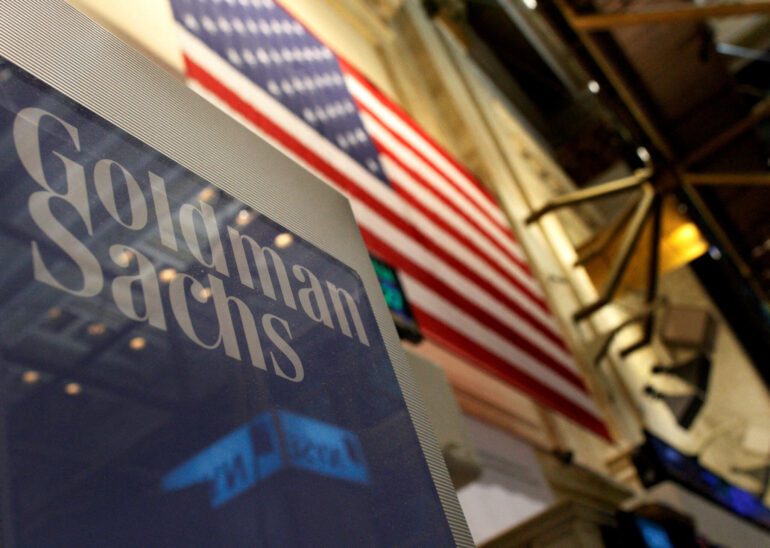TL;DR:
- Global AI investment is projected to reach nearly $200 billion by 2025, according to Goldman Sachs.
- Generative AI adoption to enhance labor productivity and economic output.
- Private AI investment is set to increase from $91.9 billion in 2022 to $158.4 billion in 2025, a 72% rise.
- U.S. accounted for over half of global AI investment in 2022.
- China’s AI investment is to rise from $20.6 billion in 2022 to $35.6 billion in 2025.
- Main AI investment areas: AI model development, infrastructure, software, and cloud services.
- Hardware and software boost necessary for generative AI scaling.
- Despite the growth, AI investment remains a small fraction of global GDP.
- U.S. AI investment could peak at 2-4% of GDP, other leading countries at 1.5-2.5%.
Main AI News:
In a fascinating revelation, the horizon of global business investment in artificial intelligence (AI) seems poised to touch the remarkable milestone of $200 billion by the year 2025. This promising projection comes to light from an insightful economic analysis conducted by the astute economists at Goldman Sachs.
As businesses and societies on a global scale increasingly embrace the potential of Generative AI, the impetus it offers to labor productivity and overall economic yield cannot be overstated. Delving into the profound implications of this technology, Goldman Sachs economists Joseph Briggs and Devesh Kodnani have charted an impressive course for the future. Their rigorous analysis foresees a surge in private investments worldwide in the domain of AI, with the figure catapulting from the estimated $91.9 billion in 2022 to an astonishing $158.4 billion by the year 2025. This represents an extraordinary 72% upswing over a mere span of three years.
The architects behind this analysis emphasize that the surge in AI-related investments is taking place from a foundation that was, comparatively speaking, modest. The metrics of global AI investment, gauged through the revenues of tech giants like Microsoft Azure, Nvidia, Google Cloud, and Amazon Web Services, tell a fascinating story. From a modest sum of nearly $3.2 billion in 2013, the investments surged to about $25.5 billion in 2017, further escalating to approximately $48.2 billion in 2020. A significant leap followed in 2021, reaching an impressive $93.5 billion before encountering a temporary plateau.
Goldman Sachs’ discerning report envisions a consistent upward trajectory for AI investments globally in the coming years. Projections anticipate a climb to $110.2 billion in 2023, followed by a substantial annual augmentation, ultimately culminating in the forecasted $158.4 billion benchmark in 2025.
Delving into the geographical dynamics, it’s noteworthy that the United States seized a lion’s share of global private AI investments in 2022, contributing an impressive $47.4 billion out of the total global sum of $91.9 billion, effectively constituting 51.6% of the total AI investment worldwide.
In the forthcoming chapters of this unfolding narrative, Goldman Sachs’ projections depict a continued ascent in U.S. AI investments, envisaging $56.8 billion in 2023, further ascending to $68.1 billion in 2024, and reaching $81.7 billion in 2025. The United States’ stake in global private investment is poised to remain relatively steadfast over the impending years.
In juxtaposition, the report sheds light on China’s AI investment journey, which amounted to $20.6 billion in 2022 and is anticipated to ascend to $35.6 billion by 2025, as per the outlined projections.
Remarkably, the crux of AI investment is anticipated to gravitate toward four principal business segments. These encompass entities engrossed in training or developing AI models, those providing indispensable infrastructure to bolster AI applications such as data centers, software development enterprises facilitating the utilization of AI, and corporate end-users who shoulder the expenditure for software and cloud infrastructure services.
Yet, the authors astutely observe that although the current focus of AI investment predominantly revolves around model development, an impending shift towards more substantial hardware and software endeavors is imperative for the substantial scaling of Generative AI. As the report underscores, “While AI investment thus far has been focused on model development, a substantially larger hardware and software push will likely be required for generative AI to scale,” as stated by Briggs and Kodnani.
Anticipating the crescendo of AI investments in the imminent years, it is pertinent to acknowledge that even though the surge is momentous, the immediate impact on the Gross Domestic Product (GDP) is predicted to remain moderately incremental. This is due to the fact that AI-related investment constitutes a comparatively small fraction of both the U.S. and global GDP. The authors elucidate, “Despite this extremely fast growth, the near-term GDP impact is likely to be fairly modest given that AI-related investment currently accounts for a very low share of U.S. and global GDP.”
As we delve into the intricacies of Goldman Sachs Research, a captivating revelation emerges. U.S. AI investment, they contend, could conceivably crest at over 2% of the nation’s GDP before gradually receding. But casting our gaze further ahead, the report propounds that over the long run, AI investment could ascend to an impressive 2.5% or even 4% of the U.S. GDP. In other countries at the forefront of AI advancements, this pinnacle might be situated within a range spanning from 1.5% to 2.5% of their respective GDPs.
Conclusion:
The Goldman Sachs report paints a promising future for the global AI investment landscape, with projections indicating substantial growth. As private investments in AI continue to rise, industries and economies can anticipate enhanced productivity and technological advancement. However, while the surge is significant, the current share of AI investment in the GDP suggests a measured immediate impact, underscoring the gradual integration of AI’s transformative potential into the economic fabric.

